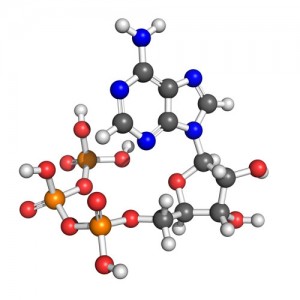Recently there has been considerable debate on what is the most appropriate and accurate method to predict the available energy to humans from food, particularly relating to factorial models vs.empirical models.  An alternative approach would be to calculate the physiologically available energy of food at the cellular level (ATP, or adenosine-5′-triphosphate), based on stoichiometric relationships and predictive uptakes of nutrients from the digestive tract.
An alternative approach would be to calculate the physiologically available energy of food at the cellular level (ATP, or adenosine-5′-triphosphate), based on stoichiometric relationships and predictive uptakes of nutrients from the digestive tract.
In this work, Leah Coles and colleagues from the Baker IDI Heart & Diabetes Institute (Australia) and the Riddet Institute, Massey University (New Zealand) have developed just such a model. The model takes ‘energetic costs’ into account when considering the ATP yield, such as the energetic cost of digesting, absorbing and transporting nutrients in the body. The model is potentially a valuable tool for the development of certain food products which need to provide accurate quantities of energy intake, such as specialised weight-loss products.
Read the full article for free until the 7th Feburary 2013!
A model to predict the ATP equivalents of macronutrients absorbed from food, Leah Coles, Shane Rutherfurd and Paul Moughan, Food Funct., 2013, DOI: 10.1039/C2FO30239J
You can keep up to date with the latest developments from Food & Function by signing up for free table of contents alerts and monthly e-newsletters.










